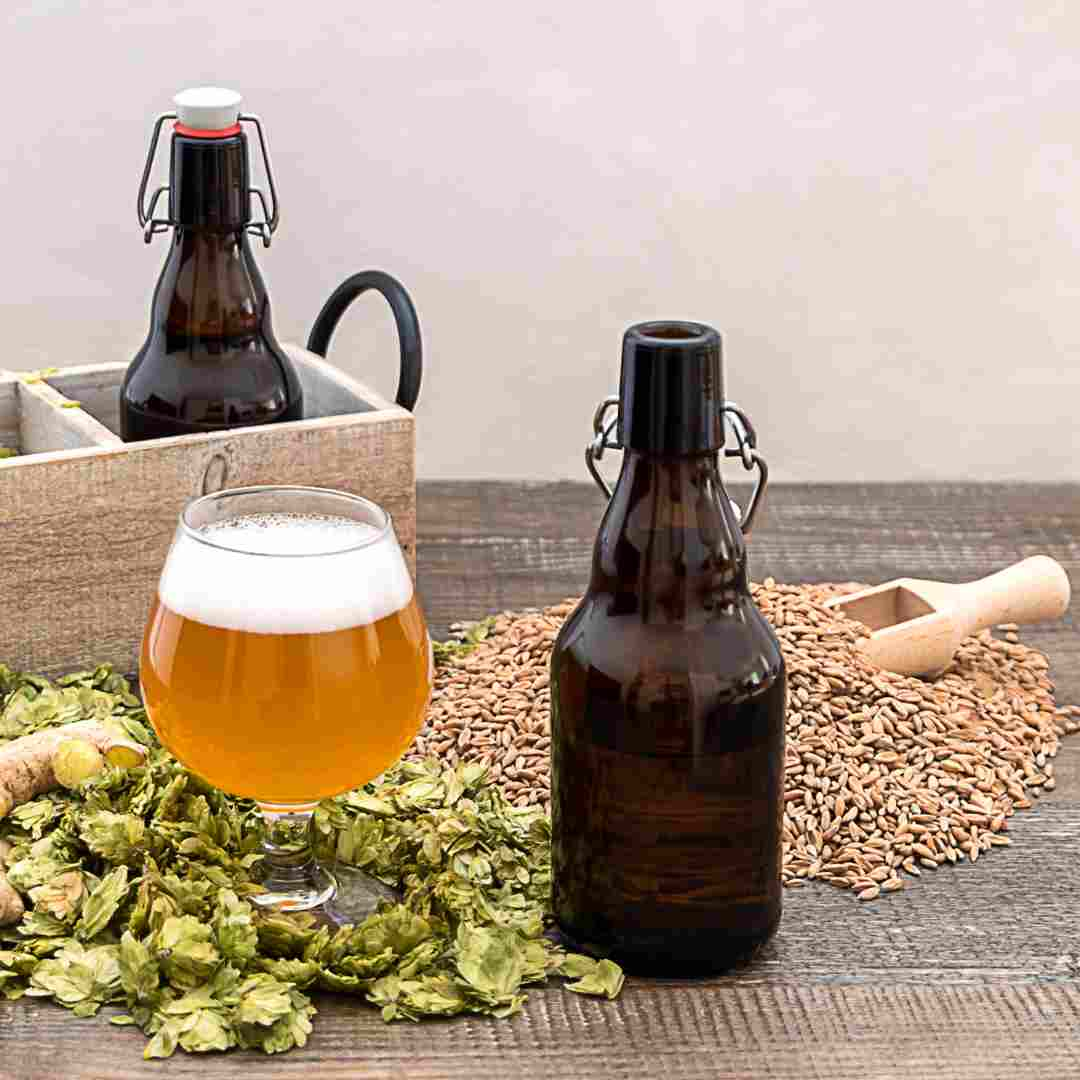Homebrew's shelf life depends on its kind and storage.
Homebrew Shelf-Life Factors
Beer type is one of the biggest factors affecting home brew shelf life. Stouts and porters last longer than IPAs and wheat beers. Stouts and porters last longer because they have more alcohol and a stronger flavor. IPAs and wheat beers are more susceptible to spoiling due to their lower alcohol content and lighter flavor profiles.
The brewing technique also impacts homebrew shelf life. Incorrect brewing can contaminate and ruin the beer. For instance, unsanitary brewing equipment can introduce bacteria and other microbes into the beer, spoiling it. After brewing, improper storage can degrade beer.
Beer shelf life also depends on storage temperature. To avoid spoiling, store beer at a cool, steady temperature. Beer should be stored around 35–45°F. Beer spoils faster at warmer temperatures. Temperature changes can also ruin the beer.
Beer shelf life depends on the container. Airtight, lightproof containers should keep the beer. Air and light can oxidize beer, causing off-flavors and spoilage. Beer is best stored in sealed, lightproof glass bottles and cans.
Finally, beer age impacts shelf life. Beer tastes the finest fresh. Off-flavors and carbonation can develop as beer ages. Homebrew should be consumed soon after brewing.
In conclusion, home brew's shelf life depends on its type, brewing procedure, storage temperature, container, and age. Homebrewers can keep their beer fresh and delicious by considering these criteria.
Homebrew Life Extension Tips
Beer kind determines home brew longevity. IPAs and pale ales are best fresh. Hops give these beers their flavor and aroma. Hop flavor and scent decrease over time, making drinking less pleasurable. Stouts and porters can mature for months or years. These beers generate complex flavors and aromas due to their reduced hop level and greater alcohol content.
The brewing procedure is the second factor affecting home brew longevity. High-quality, long-lasting beer requires proper cleanliness and fermentation. Unsanitized brewing equipment can contaminate and degrade beer. Off-flavors and odors can also result from improper fermentation, making the beer undrinkable.
Storage conditions are the third element affecting homebrew's lifetime. To avoid oxidation and deterioration, store beer in a cool, dark place. Light and heat can give beer off-flavors and odors. Airtight containers prevent oxygen from deteriorating beer. To avoid spoiling, keep kegged beer at the right temperature and pressure.
There are various ways to preserve your homebrew. Sanitize your brewing equipment before and after use. This prevents beer contamination and deterioration. Second, ferment the beer properly for the desired flavors and aromas. Third, keep beer cool and dark to avoid oxidation and spoiling. Finally, store kegged beer in airtight containers at the right temperature and pressure.
In conclusion, the longevity of a home brew depends on the beer, brewing procedure, and storage conditions. Proper cleanliness, fermentation, and storage in a cool, dark environment with sealed containers will extend the shelf life of your home brew. These suggestions can help you prolong your home brew's quality and aroma.
How to Tell if Homebrew Is Bad
First, consider the beer you produced. IPAs and pale ales are best fresh. Hops give these beers their flavor and aroma. Hop flavor and aroma decrease with time, making beer taste stale. Stouts and porters age well and develop diverse tastes.
The alcohol content also affects homebrew shelf life. Higher-alcohol beers last longer. Alcohol preserves beer by preventing bacteria and other germs from growing.
Homebrew shelf life depends on storage conditions. Beer should be kept cool and dark. Light and heat can oxidize beer, causing off-flavors and odors. Beer should be stored at a constant temperature to avoid spoilage.
How can you tell if your homebrew is bad? Find contaminants first. The beer should be thrown out if it smells sour or weird or has mold or bacteria development. Oxidation can also cause the beer to taste metallic or cardboard-like.
Carbonation levels can also indicate spoiled homebrew. Flat or low-carbonated beer may indicate that the yeast has died and the beer has gone bad. Over-fermentation can ruin beer if it has a thick, syrupy consistency.
In conclusion, beer type, alcohol concentration, and storage conditions affect home brew shelf life. Keep your homebrew in a cool, dark spot away from direct sunlight and heat, and watch for signs of contamination or spoiling. Following these steps, you can enjoy your homebrew for weeks or months.

Q&A
How long does homebrew last in the fridge?
Properly stored homebrew can last 6 months in the fridge.
2. How long does room-temperature homebrew last?
Homebrew can soon deteriorate at room temperature. Refrigerate it.
3. How can you determine if homebrew is bad?
Homebrew that tastes sour or contains mold or yeast growth is bad and should not be drunk.
Depending on the beer and storage, a homebrew can last weeks or months. To preserve beer, sterilize all equipment and bottles and store them in a cold, dark place. Beer tastes best when consumed within a few months following brewing.
